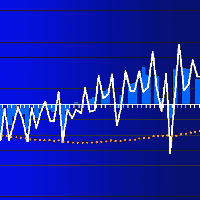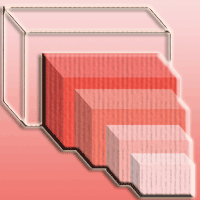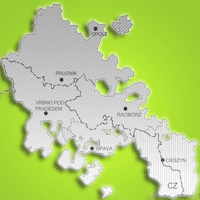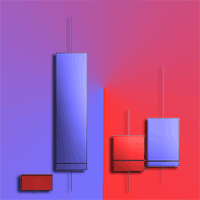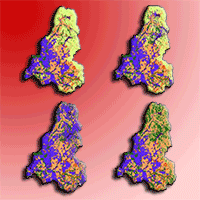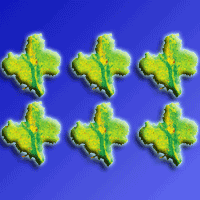
Future land use and food security scenarios for the Guyuan district of remote western China
Lin Zhen (1) , Xiangzheng Deng (2), Yunjie Wei (1), Qunou Jiang (3), Yingzhi Lin (2), Katharina Helming (4), Chao Wang (1), Hannes Jochen König (4), Jie Hu (1)
iForest - Biogeosciences and Forestry, Volume 7, Issue 6, Pages 372-384 (2014)
doi: https://doi.org/10.3832/ifor1170-007
Published: May 19, 2014 - Copyright © 2014 SISEF
Research Articles
Collection/Special Issue: RegioResources21
Spatial information and participation of socio-ecological systems: experiences, tools and lessons learned for land-use planning
Guest Editors: Daniele La Rosa, Carsten Lorz, Hannes Jochen König, Christine Fürst
Abstract
Government policy is a major human factor that causes changes in land use. Thus, simulating the dynamics of land-use systems provides important information to support decisions on land management and land-use planning, and to analyze and quantify the consequences of policies. In the present study, we predicted land-use changes and their potential impacts on food security in the environmentally fragile Guyuan District, in the Ningxia Hui Autonomous Region of north-central China, under the influence of a program to convert sloping agricultural land to conservation uses. Baseline and conservation policy scenarios (2005 to 2020) were developed based on input from local stakeholders and expert knowledge. For the baseline and conservation policies, we formulated high-, moderate-, and low-growth scenarios, analyzed the driving mechanisms responsible for the land-use dynamics, and then applied a previously developed “dynamics of land systems” model to simulate changes in land uses based on the driving mechanisms. We found that spatially explicit policies can promote the conversion of land to more sustainable uses; however, decreasing the amount of agricultural and urban land and increasing grassland and forest cover will increase the risk of grain shortages, and the effect will be more severe under the conservation and high-growth scenarios than under the baseline and low-growth scenarios. The Guyuan case study suggests that, during the next decade, important trade-offs between environmental conservation and food security will inevitably occur. Future land-use decisions should carefully consider the balance between land resource conservation, agricultural production, and urban expansion.
Keywords
Land-use Patterns, Scenario Analysis, Dynamics of Land Systems Modeling, Food Security, Guyuan District, North-central China
Authors’ Info
Authors’ address
Yunjie Wei
Chao Wang
Jie Hu
Department of Natural Resources and Environment Security, Institute of Geographic Sciences and Natural Resources Research, Chinese Academy of Sciences, Beijing (China)
Yingzhi Lin
Center for Chinese Agricultural Policy, Institute of Geographic Sciences and Natural Resources Research, Chinese Academy of Sciences, Beijing (China)
School of Soil and Water Conservation, Beijing Forestry University, 100038 Beijing (China)
Hannes Jochen König
Leibniz Centre for Agricultural Landscape Research (ZALF), Eberswalder Straße 84, D-15374 Müncheberg (Germany)
Corresponding author
Paper Info
Citation
Zhen L, Deng X, Wei Y, Jiang Q, Lin Y, Helming K, Wang C, König HJ, Hu J (2014). Future land use and food security scenarios for the Guyuan district of remote western China. iForest 7: 372-384. - doi: 10.3832/ifor1170-007
Academic Editor
Marco Borghetti
Paper history
Received: Oct 31, 2013
Accepted: Nov 26, 2013
First online: May 19, 2014
Publication Date: Dec 01, 2014
Publication Time: 5.80 months
Copyright Information
© SISEF - The Italian Society of Silviculture and Forest Ecology 2014
Open Access
This article is distributed under the terms of the Creative Commons Attribution-Non Commercial 4.0 International (https://creativecommons.org/licenses/by-nc/4.0/), which permits unrestricted use, distribution, and reproduction in any medium, provided you give appropriate credit to the original author(s) and the source, provide a link to the Creative Commons license, and indicate if changes were made.
Web Metrics
Breakdown by View Type
Article Usage
Total Article Views: 59057
(from publication date up to now)
Breakdown by View Type
HTML Page Views: 49111
Abstract Page Views: 4231
PDF Downloads: 4289
Citation/Reference Downloads: 33
XML Downloads: 1393
Web Metrics
Days since publication: 4211
Overall contacts: 59057
Avg. contacts per week: 98.17
Citation Metrics
Article Citations
Article citations are based on data periodically collected from the Clarivate Web of Science web site
(last update: Mar 2025)
Total number of cites (since 2014): 20
Average cites per year: 1.67
Publication Metrics
by Dimensions ©
Articles citing this article
List of the papers citing this article based on CrossRef Cited-by.
References
Who will feed China? Wake-up call for a small planet. WW Norton& Company, New York, USA, pp. 163.
Gscholar
China’s agricultural and rural development in the new era: challenges, opportunities and policy options’ policy recommendations and executive summary. China Council for International Cooperation on Environment and Development, Center for Chinese Agricultural Policy, Chinese Academy of Sciences, Beijing, China, pp. 23. [in Chinese with English summary]
Online | Gscholar
11-12th five-year development plan of Guyuan district. Commission of Development and Reform of Guyuan, Ningxia Hui Autonomous Region, Guyuan, China, pp. 35. [in Chinese with English summary]
Gscholar
Study on the ecosystem carrying capacity in Jinghe River Basin. PhD Dissertation, Graduate University of Chinese Academy of Sciences, Beijing, China, pp. 184. [in Chinese with English summary]
Gscholar
An empirical study on grain for grass and food security in less developed regions: a case study of Ningxia Hui Autonomous region. China Population, Resources and Environment 15 (1): 104-108. [in Chinese with English summary]
Gscholar
China population statistics yearbook 1990. Department of Population Statistics, National Bureau of Statistics of China, Scientific and Technical Documents Publishing House, Beijing, China, pp. 771. [in Chinese with English summary]
Gscholar
Environmental economics. Encyclopedia Press, Beijing, China, pp. 102. [in Chinese with English summary]
Gscholar
The stratagem of cultivated land and food supplies security: storing food in land - raising the comprehensive productivity of land resource of China. Geography and Territorial Research 16 (3): 1-5. [in Chinese with English summary]
Gscholar
Food security: the impact of land conversion from farmland to forest or grassland on grain production in Northwest China. Journal of Natural Resources, 17 (3): 299-306. [in Chinese with English summary]
Gscholar
Dynamic analysis on the spatial pattern of landscape of small watershed in loess hilly-gully region: a case study of Shanghuang test area in Guyuan. Science of Soil and Water Conservation 3 (2): 107-112. [in Chinese with English summary]
Gscholar
Ex ante impact assessment of land use changes in European regions - the SENSOR approach. In: “Sustainability Impact Assessment of Land Use Changes” (Helming K, Perez-Soba M, Tabbush P eds). Springer-Verlag, Berlin, Germany, pp. 77-105.
Gscholar
Cultivated land conversion and bioproductivity in China. In: “Remote sensing and modeling of ecosystems for sustainability” (Gao W, Shaw R eds). Proceedings of the SPIE, Bellingham, Washington, DC, USA, pp. 135-148.
Gscholar
Global climatic warming, the Yangtze floods and potential loss. Advances in Earth Sciences 18 (2): 277-284. [in Chinese with English summary]
Gscholar
Regional impact assessment of land use scenarios in developing countries using the FoPIA approach: findings from five case studies. Journal of Environmental Management 127: 556-564.
CrossRef | Gscholar
1998 Yangtze flood and fight against it. Yangtze River 30 (1): 1-7. [in Chinese with English summary]
Gscholar
Report on regional development of China. Commercial Press, Beijing, China, pp. 333. [in Chinese with English summary]
Gscholar
Multifunctional land use: meeting future demands for landscape goods and services. In: “Multifunctional land use: meeting future demands for landscape goods and services” (Mander U, Wiggering H, Helming K eds). Springer, Berlin, Germany, pp. 1-13.
Gscholar
Regulation on implementing protection of cultivated land nationwide. Beijing, China, pp. 38. [in Chinese with English summary]
Gscholar
Statistic Year Book of China. China Statistic Press, Beijing, China, pp. 1032. [in Chinese]
Gscholar
Guyuan yearbook 2007. Office of Guyuan Chorography, Chinese Cultural and Historical Press, Beijing, China, pp. 443. [in Chinese with English summary]
Gscholar
Report of the 6th population census of Guyuan. Statistical Bureau of Guyuan City, Guyuan city of Ningxia Hui Autonomous Region, China, pp. 38. [in Chinese with English summary]
Gscholar
Circular for conservation of forest resources and prohibition of deforestation and occupation of forest land. State Council, Beijing, China, pp. 2. [in Chinese with English summary]
Gscholar
Examination of cultivated land utilization to guarantee our grain security and its recent adjustment thoughtfulness. Economic Geography 23 (3): 371-374. [in Chinese with English summary]
Gscholar
Grain for green project, grain policy and sustainable development. Social Sciences in China 6: 25-38. [in Chinese with English summary]
Gscholar
Changes in cultivated land due to urbanization: China in an international perspective. CCAP Working Paper, Paper Presented in CCICED, Agricultural and Rural Development Working Meeting, Center for Chinese Agricultural Policy, Chinese Academy Sciences, Beijing, China, pp. 56.
Gscholar
Grain-for-Green program and its impacts on food security in hilly and gully area of Loess plateau in northern Shaanxi province: take Mizhi county in Yulin city as a case. Journal of Arid Land Resources and Environment 22 (8): 165-169. [in Chinese with English summary]
Gscholar
Converting steep cropland to forest and grassland: efficiency and prospects of sustainability. International Economic Review 2: 56-60.
Gscholar
Landscape pattern changes and driving force analysis in Jinghe Watershed. PhD Dissertation, Graduate University of Chinese Academy of Sciences, Beijing, China, pp. 108. [in Chinese with English summary]
Gscholar
The forecast of the regional pattern changes in China’s grain production in the early 21st century. National Territory and Land Economics 1: 16-19. [in Chinese with English summary]
Gscholar
History and brief analysis of drying up in Yellow River. Yellow River 20 (10): 38-40. [in Chinese with English summary]
Gscholar
Study on the eco-agriculture construction and sustainable development in Jinghe watershed. Agricultural Research in the Arid Areas 24 (3): 138-142. [in Chinese with English summary]
Gscholar
Land-use change dynamics, driving forces and policy implications in Jinghe watershed of Western China. Resources Science 27 (4): 33-37. [in Chinese with English summary]
Gscholar

